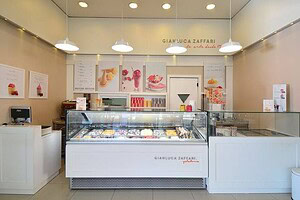A Dessert Rooted in Territory and Time
Italian ice cream, better known as gelato, is not merely a cold dessert. It is the embodiment of Italian tradition — shaped by centuries of culinary heritage, regional identity, and a commitment to natural quality. To understand what makes gelato so distinctive, we must look beyond the surface of its creamy texture and into the heart of its ingredients and methods.
Unlike industrial ice cream, Italian gelato is made to express authenticity. Its essence lies not only in what it is made of, but also how it is made — slowly, thoughtfully, and always with care.
What Is Italian Gelato Made Of?
At its core, Italian gelato is composed of:
-
Milk, preferably fresh and whole
-
Sugar, in balanced, restrained amounts
-
Natural flavorings, such as fresh fruit, roasted nuts, dark chocolate, or real coffee
-
Occasionally egg yolks, depending on regional recipes (notably for crema flavors)
Compared to standard ice cream, gelato typically contains less fat (often below 8%) and significantly less air — resulting in a dense, smooth, and flavor-rich experience.
But more than the ingredients themselves, it is the selection and respectful treatment of them that defines true artisan gelato. Additives, preservatives, and artificial flavors have no place in the Italian tradition. The goal is purity — to let the ingredients speak for themselves.
A Matter of Balance, Not Excess
In an era where industrial production often favors intensity and shelf life, Italian gelato stands apart by honoring balance over excess.
-
Sweetness is gentle, never overpowering.
-
Fat content is low, which enhances flavor clarity rather than masking it.
-
Air incorporation is minimal, preserving the natural weight and elasticity of the gelato.
This composition allows flavors — whether it be Amalfi lemon or Piemonte hazelnut — to retain their character, their texture, and even their aroma. The result is a dessert that does not dominate the palate but lingers with elegance.
Craftsmanship Over Manufacturing
Authentic gelato is an act of craftsmanship. Each day, artisan gelato makers (gelatieri) prepare their base from scratch, choosing ingredients based on seasonality, freshness, and locality. Many still pasteurize and churn manually or semi-automatically, a process requiring both precision and intuition.
This is not mass production. Rather, it is a daily ritual — blending milk and sugar, infusing it with roasted pistachios or ripe strawberries, carefully freezing and aging the mix to achieve optimal flavor and texture.
Technology Supporting Tradition
Today, the landscape of gelato-making is evolving. While the philosophy remains rooted in heritage, modern gelato equipment has become an essential ally in preserving quality and consistency — especially outside Italy.
Brands like Mehen, for example, have developed specialized machines that respect traditional methods while ensuring hygienic, repeatable results. These tools are not meant to replace the artisan’s hand, but to support it — enabling gelato makers around the world to follow Italian processes with precision and reliability.
From batch freezers to pasteurizers, this new generation of equipment empowers small producers and restaurateurs to make fresh gelato daily — and in doing so, carry Italian culture to new places, one scoop at a time.
Territory in Every Flavor
What makes Italian gelato truly unique is its relationship to place. In Italy, each region has its signature flavors and raw materials:
-
In Sicily: pistachios from Bronte, citrus from the Ionian coast
-
In Piedmont: hazelnuts and gianduia
-
In Tuscany: sheep’s milk ricotta and fig
-
In Emilia-Romagna: classic crema, zabaglione, and mascarpone
This intimate link between territory and taste is why gelato remains one of the most expressive forms of Italian gastronomy. It’s not just dessert — it’s geography you can taste.
Conclusion: A Living Tradition, Accessible Worldwide
To ask “what is Italian gelato made of” is to uncover much more than a list of ingredients. It is to understand a living tradition — one shaped by respect for nature, devotion to balance, and a belief in quality over convenience.
Today, as the world continues to embrace Italian ice cream, it becomes even more important to protect its roots. Through a combination of skilled hands and thoughtful technology, gelato remains what it has always been: an expression of culture, identity, and craft.




